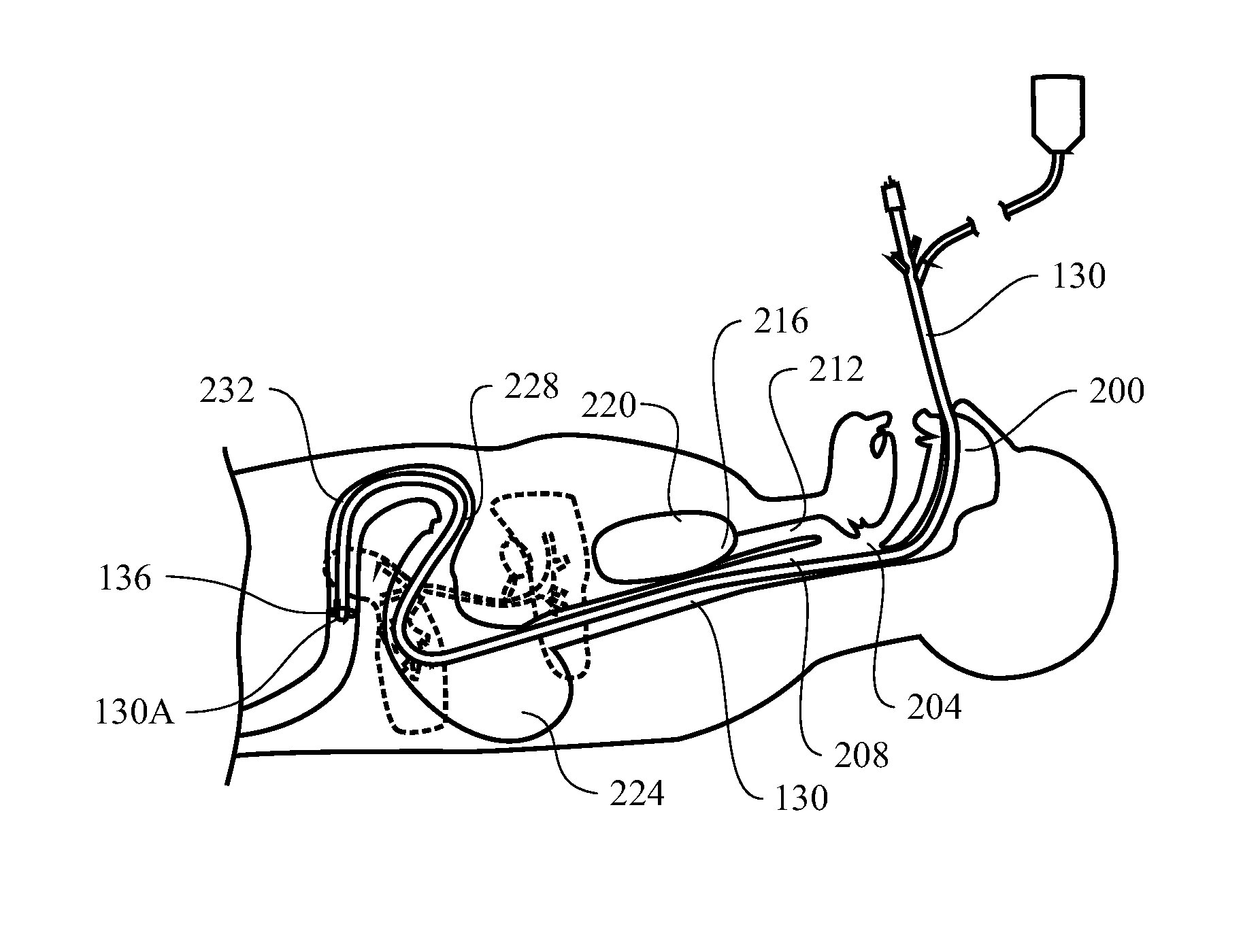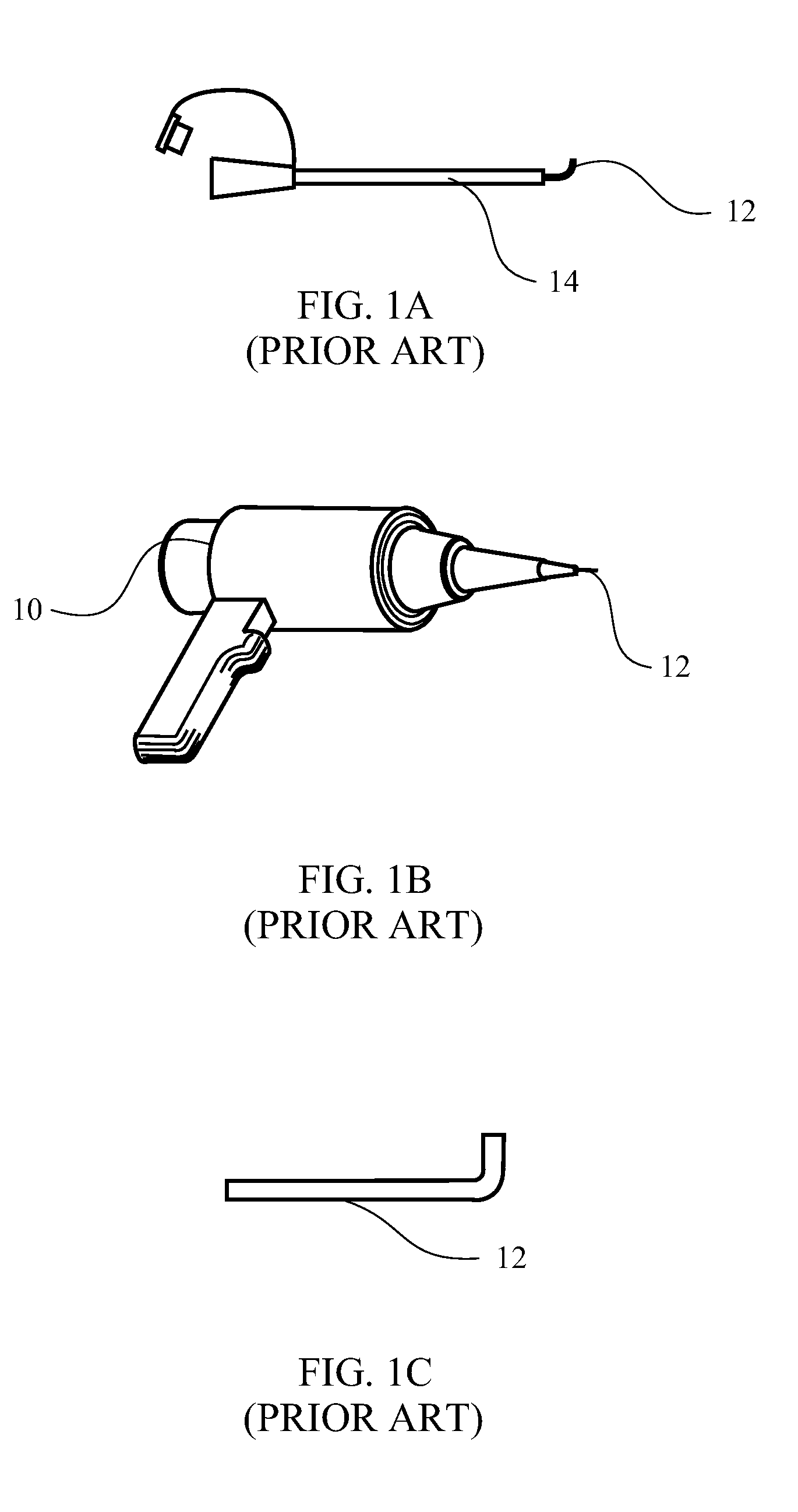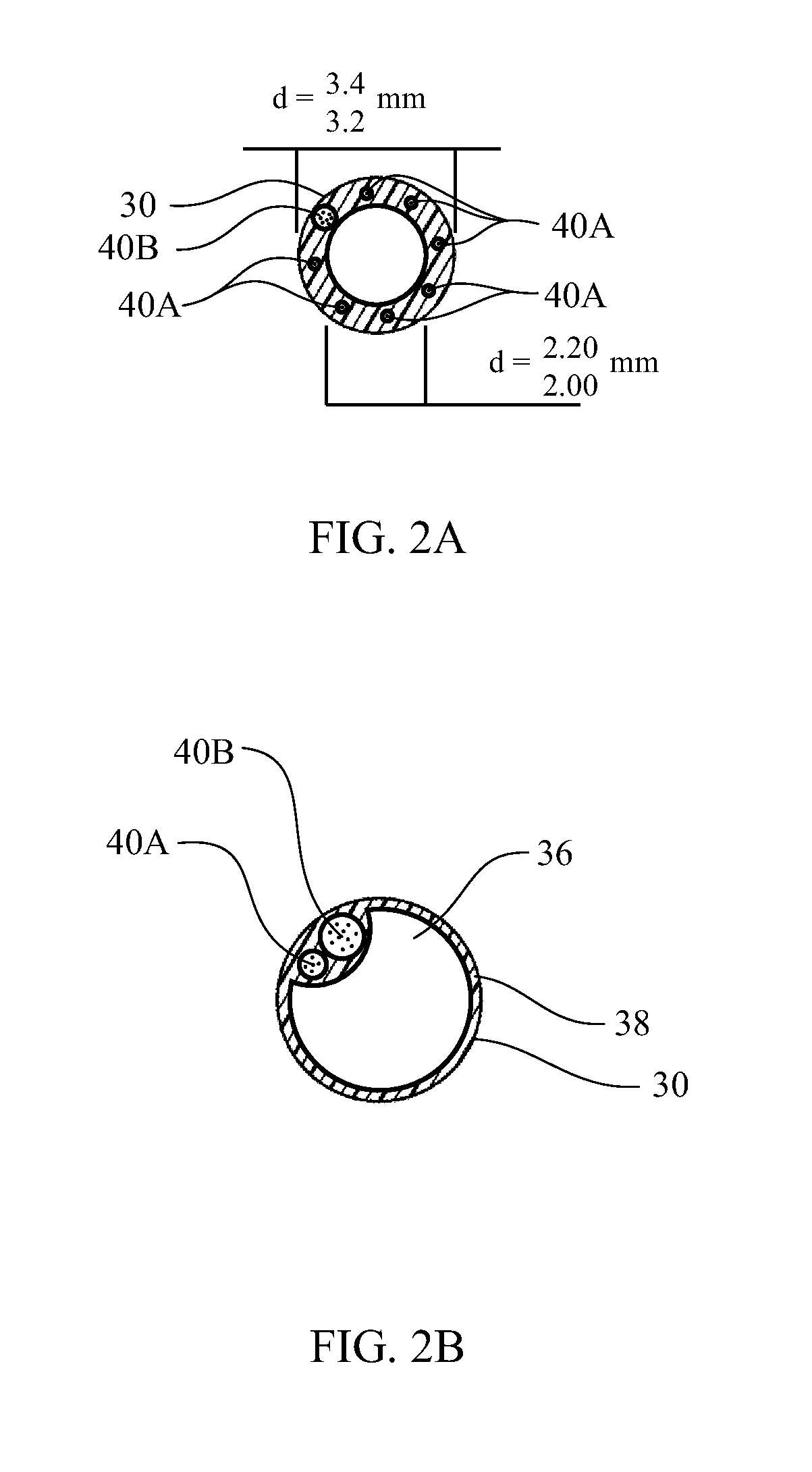Optically guided medical tube and control unit assembly and methods of use
a technology of control unit and medical tube, which is applied in the direction of surgery, medical science, gastroscope, etc., can solve the problems of increasing morbidity and mortality, incorrect positioning of feeding tube during the process, and often performing the placement of medical tube, etc., to facilitate the flow of nutrients and medication, facilitate flushing, aspiration, and/or insufflation
- Summary
- Abstract
- Description
- Claims
- Application Information
AI Technical Summary
Benefits of technology
Problems solved by technology
Method used
Image
Examples
Embodiment Construction
[0084]Before the present invention is disclosed and described, it is to be understood that this invention is not limited to the particular structures, process steps, or materials disclosed herein, but is extended to equivalents thereof as would be recognized by those ordinarily skilled in the relevant arts and by the terms set forth in the claims. It should also be understood that terminology employed herein is used for the purpose of describing particular aspects of the invention only and is not intended to limit the invention to the aspects or embodiments shown.
[0085]It must be noted that, as used in this specification and the appended claims, the singular forms “a,”“an,” and “the” may include plural referents unless the context clearly dictates otherwise. Thus, for example, reference to “an optical fiber” may include one or more of such optical fibers, and reference to “the lens” may include reference to one or more of such lenses.
[0086]As used herein, “subject” or “patient” refe...
PUM
 Login to View More
Login to View More Abstract
Description
Claims
Application Information
 Login to View More
Login to View More - R&D
- Intellectual Property
- Life Sciences
- Materials
- Tech Scout
- Unparalleled Data Quality
- Higher Quality Content
- 60% Fewer Hallucinations
Browse by: Latest US Patents, China's latest patents, Technical Efficacy Thesaurus, Application Domain, Technology Topic, Popular Technical Reports.
© 2025 PatSnap. All rights reserved.Legal|Privacy policy|Modern Slavery Act Transparency Statement|Sitemap|About US| Contact US: help@patsnap.com



